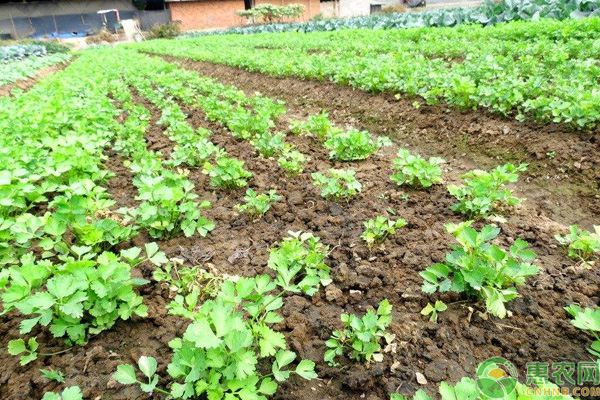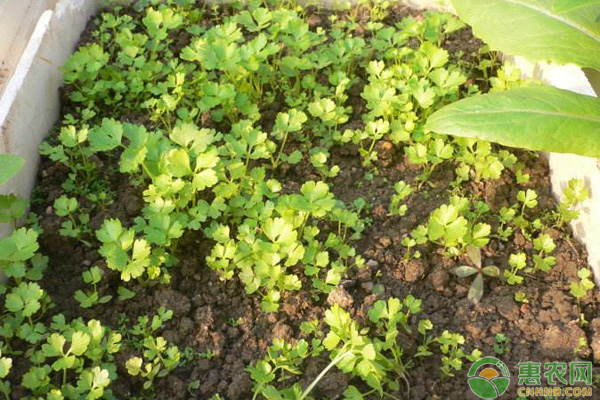When is celery sowed? How to manage after unearthing? Introduction to the management of celery seedlings
Celery is a common vegetable in life. Many people like to use celery with pork and beef for small stir fry. It is very delicious. Many people of celery will grow their own plants, so how can we cultivate celery to cultivate strong seedlings? How to manage the celery seedlings pests and diseases? Let's take a look at the introduction of celery cultivation!

Celery sowing time
Celery is a kind of stem and leaf vegetables rich in dietary fiber and various minerals. It prefers cold environment and is usually planted in spring and autumn. The optimum growth temperature at seedling stage is 20~25°C, generally not higher than 25°C. If the temperature is too high, the growth of celery will be inhibited, and if the temperature is too low, the disease will be induced. In addition, celery seedlings have strict requirements on the humidity in the field. Excessive humidity can cause various diseases such as blight and stagnation. Therefore, the management of celery seedlings is crucial, and it is the basis for the yield and quality of celery in the later period. Then how should the celery seedlings after the excavation be managed to cultivate strong seedlings and reduce the occurrence of pests and diseases? Then look down.
Growth characteristics of celery seedlings after excavation
Here we highlight a series of features of autumn celery growth. After the autumn celery seedlings were unearthed, the seedling leaves could not be fully developed, and they could not rely on photosynthesis to meet their own growth needs. At this time, the seeds themselves had been consumed, the roots were less and slower, and the overall growth was slower. The seedlings are not resistant to drought and high temperatures as well as direct sunlight. At this time, roots, squats and blight are prone to occur during this period. Therefore, the management of this period should be managed from the aspects of pest control, cultivation of strong seedlings, and rational management of water and fertilizer.

Main points of celery seedling management after unearthing
1, disease
After the unearthed celery seedlings are prone to diseases such as roots, smashing and blight. The root of the root is mainly a disease caused by low ground temperature during the sowing period. It belongs to physiological diseases. The prevention and control mainly starts from controlling the sowing temperature. After the seedlings are unearthed, the temperature should be controlled according to the climatic conditions. When the temperature is too high, the plastic film should be removed in time. And cover, set up a sunshade net, remove the sunshade net and plastic film when the temperature is moderate, so that the seedbed is ventilated, so that the seedlings are exposed to the sun. The disease and blight are the two most common diseases in the seedling stage, and the damage to the celery seedlings is also the greatest. The disease conditions are related to high temperature, high humidity, excessive watering in the field, and excessive seedling density and poor ventilation.
2, pests and diseases
Pest control mainly comes from physical control and chemical control. Physical control: control the number of watering, timely drainage after rainy days, and uncover the film and other coverings after the seedlings are unearthed. Set up a sunshade net in high temperature weather to prevent sun exposure, reduce temperature, grow seedlings to about 3 leaves and time to weed, reduce density and increase ventilation in the field. Chemical control: Spray a liquid fungicide or powder for blight and rickets. In addition, it is also possible to scatter grass ash in the field, which can not only control pests and diseases but also add potassium fertilizer to celery to promote rooting and strong seedlings.
Water and fertilizer management after celery seedlings unearthed
Water and fertilizer management in celery seedling stage is the key to cultivating strong seedlings. Celery avoids over-watering, so it is basically no longer watered after pouring water before sowing. After the seedlings are unearthed, a small amount of watering is carried out according to the drought conditions in the field. Generally, the watering time is selected in the morning. Because it will increase the humidity in the plastic film after watering in the afternoon, especially when the temperature is low, it will lower the ground temperature, which is not good for the growth of celery seedlings. The number of celery top dressing should be based on the growth of seedlings. Generally, foliar fertilizer can be sprayed at the 3-leaf stage of seedlings to promote the above-ground growth of seedlings and increase their photosynthesis ability. In the later stage, nitrogen fertilizer and phosphorus and potassium fertilizer were supplemented according to the growth situation. If the seedlings grow thin, the foliar fertilizer can be sprayed once before planting to improve the consistency of celery seedling growth.
The management of celery seedling stage is related to the later yield and quality, so it should be highly valued, especially in terms of pests and diseases and water and fertilizer management.

Celery is actually very manageable during the planting process, as long as you do a few key points in the above small series. Of course, some other symptoms of celery during the planting process are not mentioned above. If there is any problem with the celery growers, you can comment on the message!
Trisodium Citrate,Sodium Citrate,Food Additives,Magnesium Citrate
Wuxi Yangshan Biochemical Co.,Ltd. , https://www.salesacetates.com